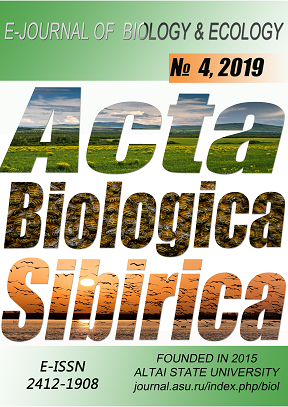Аннотация
A territory mapping method has been employed in 2015 to assess the population density of 8 non-passerine and 10 passerine uncommon bird species breeding in a peri-urban riparian forest (280 ha) along Zambezi River (7 km long) near Katima Mulilo NE Namibia. The population densities (pairs per 100 ha) are estimated as follows: Trumpeter Hornbill: 1.4, Schalow’s Turaco: 2.9, Green-backer Heron: 1.1, Little Bittern: 0.4, Lesser Jacana: 0.4, African Finfoot: 0.4, White-crowned Lapwing: 0.7, Long-billed Crombec: 3.9, Yellow White-eye: 4.3, Scarlet-chested Sunbird: 0.7, African Golden Oriole: 2.9, Black-headed Oriole: 0.7, Violet-backed Starling: 0.7, Pied Wagtail: 8.6, Ashy Flycatcher: 0.4, Black Flycatcher: 0.4, Hartlaub’s Babbler: 4.3.
Литература
Allan DG, Jenkins AR. 1993. A count of waterbirds along a section of the lower Orange River. Bontebok 8: 33-34.
Bibby CJ, Burgess ND, Hill DA. (2012). Bird censuses techniques. London: Academic Press.
Del Hoyo J, Elliott A, Sergatal J, Chrisie DA. (eds.). 1992-2013. Handbook of the Birds of the World. Vol. 1-13. Barcelona, Lunx Edicions.
Dowsett-Lemaire F. 1988. Fruit choice and seed dissemination by birds and mammals in the evergreen forest of upland Malawi. Rev. d’Ecol. (Terre et Vie) 43: 251-283.
Fry CH, Stuart K, Urban E. 1982-2004. The birds of Africa. Vol. 1-7. Cambridge (MA, USA): Academic Press.
Harrison JA. 1997. Longbilled Crombec. In: Harrison JA. et al., editors. The Atlas of Southern African Birds. p. 266-267.
Hockey PAR, Dean WRJ, Ryan PG, Maree S. (eds.) 2005. Roberts’ Birds of Southern Africa. Cape Town: John Voelcker Bird Book Fund.
Kopij G. 2016. Birds of Katima Mulilo town, Zambezi Region, Namibia. International Science & Technology Journal of Namibia 7: 85-102.
Kopij, G. 2017. Structure of avian assemblages in Zambezian Baikiaeae woodlands, northern Namibia. Zoology & Ecology 27: 1-10.
Kopij G. 2018a. Breeding bird community of Ogongo Game Reserve, north-central Namibia. International Science & Technology Journal of Namibia 12: 117-126.
Kopij G. 2018b. Atlas of birds of Kasani. Babbler 64: 3-15.
Mendelsohn J, Jarvis A, Roberts C, Robertson T. 2009. Atlas of Namibia. A Portrait of the Land and its People. Cape Town: Sunbird Publishers.
Sutherland WJ. 1996. Ecological Census Techniques: a handbook. Cambridge (U.K.): Cambridge University Press.
Vernon C.J. 1985. Bird populations in two woods near Lake Kyale. Honeyguide 31: 148-161.
Авторы, публикующиеся в данном журнале, соглашаются со следующими условиями:
a. Авторы сохраняют за собой права на авторство своей работы и предоставляют журналу право первой публикации этой работы с правом после публикации распространять работу на условиях лицензии Creative Commons Attribution License, которая позволяет другим лицам свободно распространять опубликованную работу с обязательной ссылокой на авторов оригинальной работы и оригинальную публикацию в этом журнале.
b. Авторы сохраняют право заключать отдельные договора на неэксклюзивное распространение работы в том виде, в котором она была опубликована этим журналом (например, размещать работу в электронном архиве учреждения или публиковать в составе монографии), с условием сохраниения ссылки на оригинальную публикацию в этом журнале. с. Политика журнала разрешает и поощряет размещение авторами в сети Интернет (например в институтском хранилище или на персональном сайте) рукописи работы как до ее подачи в редакцию, так и во время ее редакционной обработки, так как это способствует продуктивной научной дискуссии и положительно сказывается на оперативности и динамике цитирования статьи

